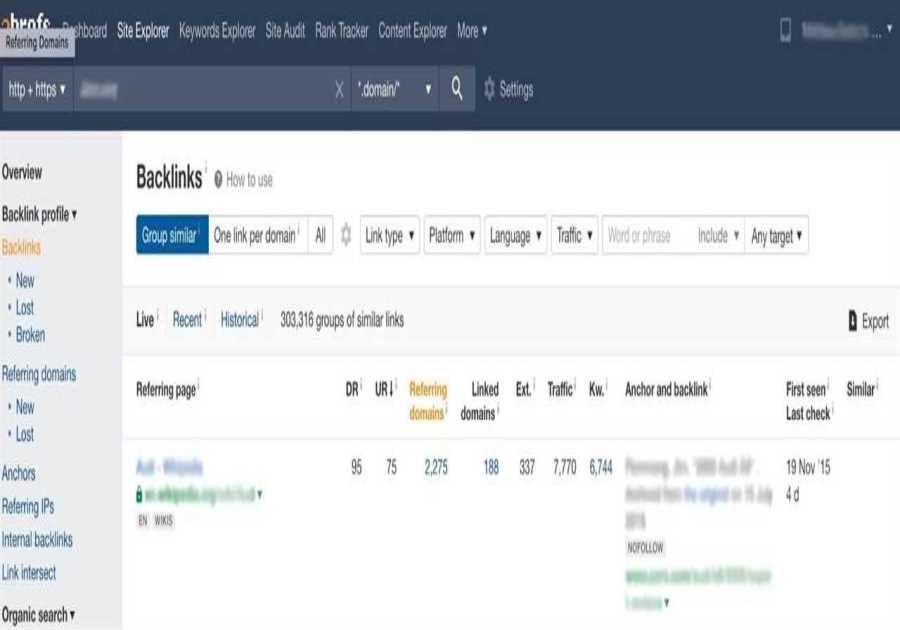
As a result of all this upheaval and change that happened in 2020, the landscape is changing. Editor X, a web creation platform for designers, has recently launched a minisite covering the web design trends of 2021 — and it seems like the web is going to look very different than in recent years.

The interactive report, published on Shaping Design, goes through dozens of examples of sites that try to come up with original and unexpected solutions. It’s not all just about the examples though. The showcase covers how designers live through the repercussions of the past year and share their insights into the future of screen design.
The entire experience has some hidden gems on its own, and it’s built on the Editor X platform. It comes complete with interactions and examples that showcase these upcoming trends. Let’s take a look at some of them in a bit more detail.
Your UI, By You
Consumers are often willing to provide some details about their preferences for the right kinds of personalized experiences. However, that requires brands and designers working for these brands to decide what those personalizations will be. Typically, it takes the form of personalized recommendations or messaging based on the visitors’ or customers’ histories with the website.

However, we might be expecting a slightly different layer of user experience coming up soon — interfaces that would adjust even more significantly based on user preferences. That goes not only for adjusting the dark/light mode, color themes, size and spacing of the text, reduced motion and accessibility in general.
Interfaces would change based on available connectivity (should we really load web fonts and parallax on a slow 3G connection?), device memory, but also personal interests and product preferences. And as a result, we are looking at interfaces that are becoming singular to each customer, reflecting their taste, style, and identity. As designers, we'll go beyond designing design systems, and create a vibrant spectrum of experiences, one particular kind for every customer.
Design Activism: Brands Take a Stand
When a brand stays doesn't speak out in support of a cause, it actually supports the status quo. So it’s not surprising that many customers choose to support brands and products that they connect with way beyond the quality of the product they are serving. The product is always embodied by the people interacting with it, and as these people have values and principles, they need to find representation in the brand’s voice as well to feel connected to the product.

And when brands decide to publicly take a stand for something they believe in, they need to speak with bold, iconic visuals that also stand up for what they represent. It became very clear last year with protest graphics and campaigns calling for racial, environmental, and political justice. In 2021, social activism won’t quietly sit behind a single page about the company’s do-goodism or values. Instead, we should be expecting more brands, agencies, and designers to boldly declare what they stand for.
As a result, we might see more unique and bespoke design assets, such as custom-made typefaces, illustrations, and icon sets. Designers will have to react quickly to the ongoing events, creating and integrating bold visuals that send an unequivocal message of solidarity and support.
We should also see more diverse and inclusive voices and messages in illustrations, language, and promotional messages, along with more campaigns supported and enabled by brands, and designers presenting them.
Sensitivity and Optimistic Voice
With the world going together through a difficult and isolated time, for many of us staying optimistic about the future is the only way to deal with the situation. Last year can be seen as a global reset of pretty much everything we’ve been used to in our lives; a time that forced us to rethink our values, principles, views and connections with people we care about.

So it shouldn’t be surprising that we should be expecting a calm, uplifting and playful tone transported in messages all over the web. Colors and typography will feel lighter, brighter, hopeful and even dreamier. We should see more authentic, honest and personal attributes in digital design, with people not being afraid to show what matters to them and how they really see themselves. As we all are in the same boat, interfaces and brands should become more sensitive and caring, perhaps with a dose of humor and focus on emotional wellness.
For designers, that would mean energetic illustrations and color palettes, accessible experiences, a friendly, supportive tone and a positive, uplifting message — all of them together fostering a sense of optimism and wellbeing.
Also, designers are reclaiming technology and putting humans first. We’ll be looking at more inclusive and safe web spaces for truthful conversations. That also means a greater emphasis on tracking, privacy, data protection and the carbon footprint of online platforms, to help make the Web a better, safer environment for both people and the planet.
Retro Touch
To say that we’re fully entrenched in the digital world would be an understatement. But surely it isn’t easy to abandon the digital world when the Web makes our lives and our work so much easier (at times). Yet when we look back today, we often miss the times when things used to be just a little bit different. There, we aren’t just going a few years back, but even beyond that, with designers using everything from floppy disks to vintage stamps to bring retro touch to their designs.

After a long reign of the flat aesthetic, we’re now in search of new and contemporary ways of adding depth to our online experiences, so things that used to be everywhere on the web in the early 2000s might be in fashion yet again — objects from personal life, slightly more quirky and less predictable layouts, textures, patterns and even pixel art.
Ironically, such websites aren’t easy to create these days as they flip many of the guidelines and rules that we've got used to over a decade upside down. But in the world which is remarkably similar, being different brings the spotlight and attention. So brands that want to stand out, need to stand out in their digital experiences as well. So it shouldn't be surprising to see unusual layout and interaction modes, themed designs, eventually with a sprinkle of new old retro touch.
In Conversation With Leading Designers
To further observe 2020's implications on the design industry, Shaping Design also spoke with leading designers to hear about their past year, as well as their hopes for the future.
In an honest and intimate series of interviews, designers such as Debbie Millman and Pentagram’s Natasha Jen and Marina Willer discuss their shift to remote work, the social and racial tensions, and the climate crisis that has made 2020 a year like no other.
For many creative professionals, this year was truly transformative. Mitzi Okou, co-founder of “Where Are the Black Designers,” recently left her tech job in order to amplify Black voices in design. “If you would have told me three years ago that I would become an activist or a design activist, especially a race design activist, I would have laughed in your face,” she says.

Others share a similar sentiment. The entire year led designer Aarron Walter to quit his job in favor of a new role at Resolve to Save Lives, a public health nonprofit. “The pandemic caused me to reflect on how I'm spending my time,” he contemplates. “It became clear that I wanted to do something for the greater good, or do work that contributes to the world in some significant way.”
All wonderful stories by wonderful designers who provide a unique personal perspective on how they managed to get through 2020, and what the year has meant for both their personal lives and careers.
You can find more details about the experiences of these designers made in “Designers discuss 2020’s impact on the industry”, published on Shaping Design as well.
Wrapping Up
The world has changed, and so has our role as designers. We never know what the future will bring, but ultimately we shape it, and we can contribute more positive change to the world than we often think we can. So perhaps next year, when we look at trends coming up in digital design, we’ll be the ones bringing these trends to the web in the first place.
You can find the entire report of design trends 2021 with examples and references on web design trends of 2021.
By: [email protected] (Suzanne Scacca)Title: Web Design Trends 2021: The Report
Sourced From: Original article available: www.smashingmagazine.com/2021/01/web-design-trends-report-2021/
Published Date: 2021 01 15
Did you miss our previous article...
https://internetmarketingworldwide.com/web-design/landing-page-vs-website-all-your-questions-answered






